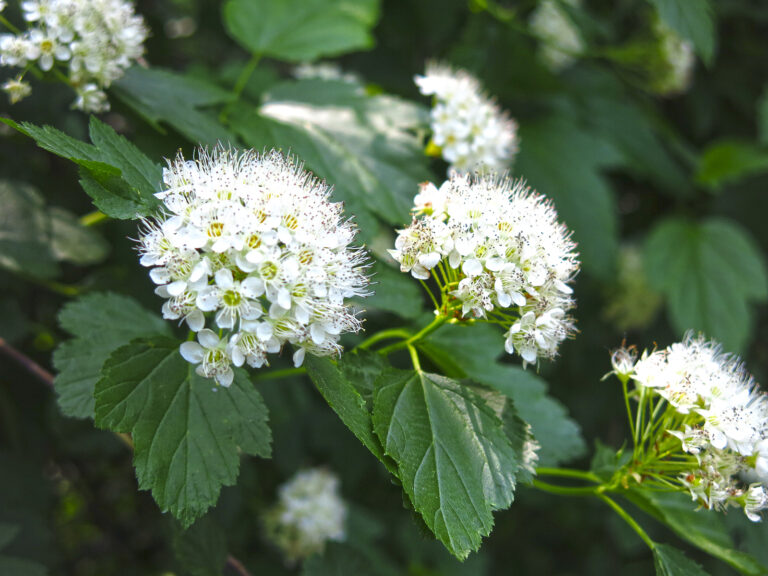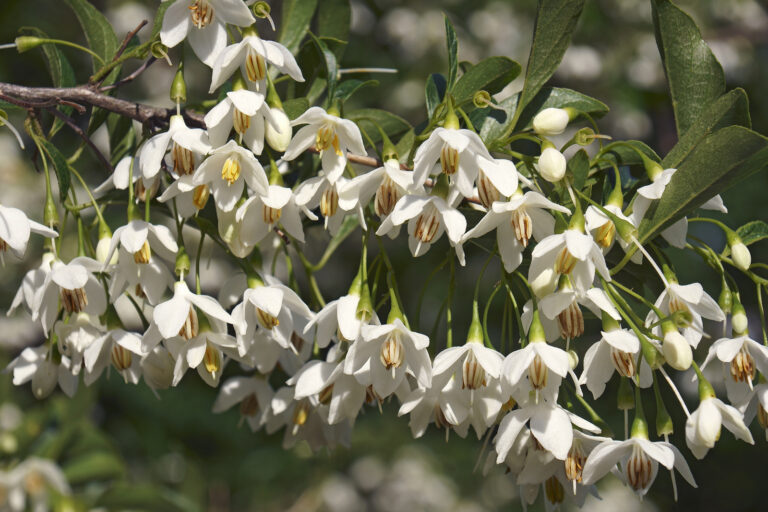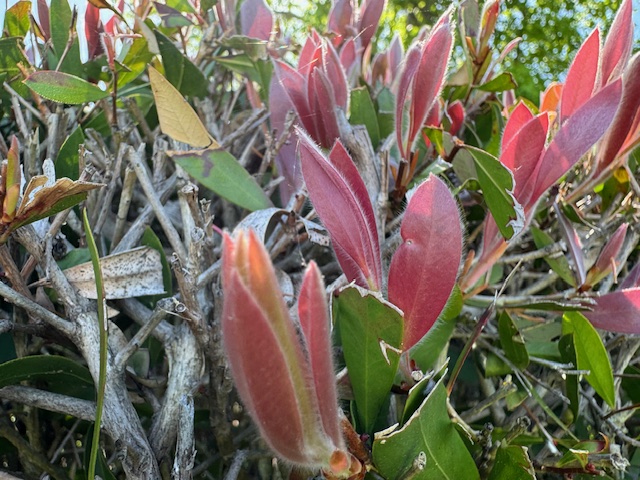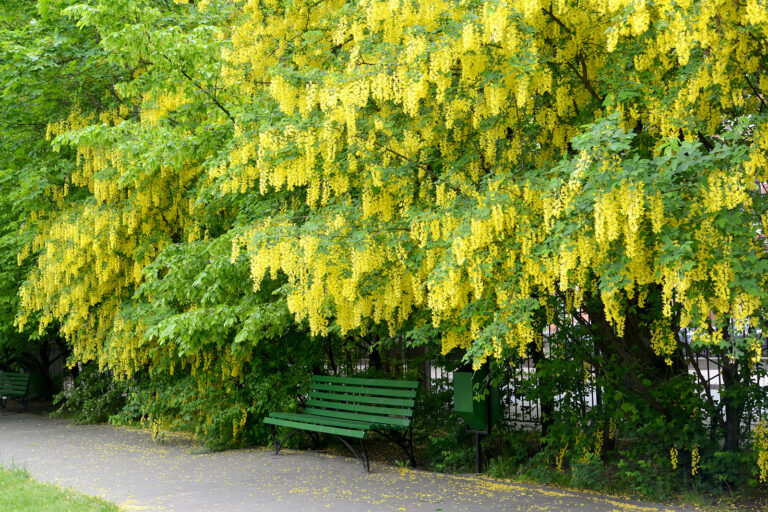20 Trees and Shrubs with Decorative Bark
Trees and shrubs with decorative bark can add another element of interest to the garden. There are colorful barks, flaking barks, and peeling barks. Some trees and shrubs have all three.
Tree and shrub size and form are commonly the first things gardeners look at when choosing a tree or shrub for the garden. Not far behind are foliage and flower colors. You can add to that the decorative quality of a tree or shrub’s bark.
Bark is a plant’s protection against the outside world. It insulates the plant from heat and cold. It protects the plant from the rain while keeping necessary moisture in. It protects the plant from pests and disease.
Trees and shrubs are almost always producing new wood and new bark. As they grow, the layer of bark thickens and old bark dies and falls away. Bark may crumble. It may flake. It may peel. Often we hardly notice. But the shedding process for some trees and shrubs is dramatic.
Here are 20 trees and shrubs with decorative bark. You can add any one or more of these to the garden to bring color and interest to your garden.
Coral-Red Bark
Acer palmatum ‘Sango-kaku’ (coral-bark maple): Small deciduous tree grows 15 to 20 feet (4.5-6m) tall and 20 to 25 feet (6-8m) wide. This beautiful small tree has brilliant red-coral bark on its young branches with color that intensifies in the winter. Lobed leaves turn vivid red in autumn before falling. Brilliant coral-red bark through winter. Needs good soil. Does best in partial shade. Zones 5 – 8.
Cornus sericea (red-osier dogwood): Deciduous shrub grows 6 feet tall and 12 feet (1.2-3.6m) wide. Dark green ovate to lance-shaped leaves turn red or orange in autumn. Trunks and stems turn dark red after the leaves drop. Grow in full sun to partial shade. Zones 3-8.
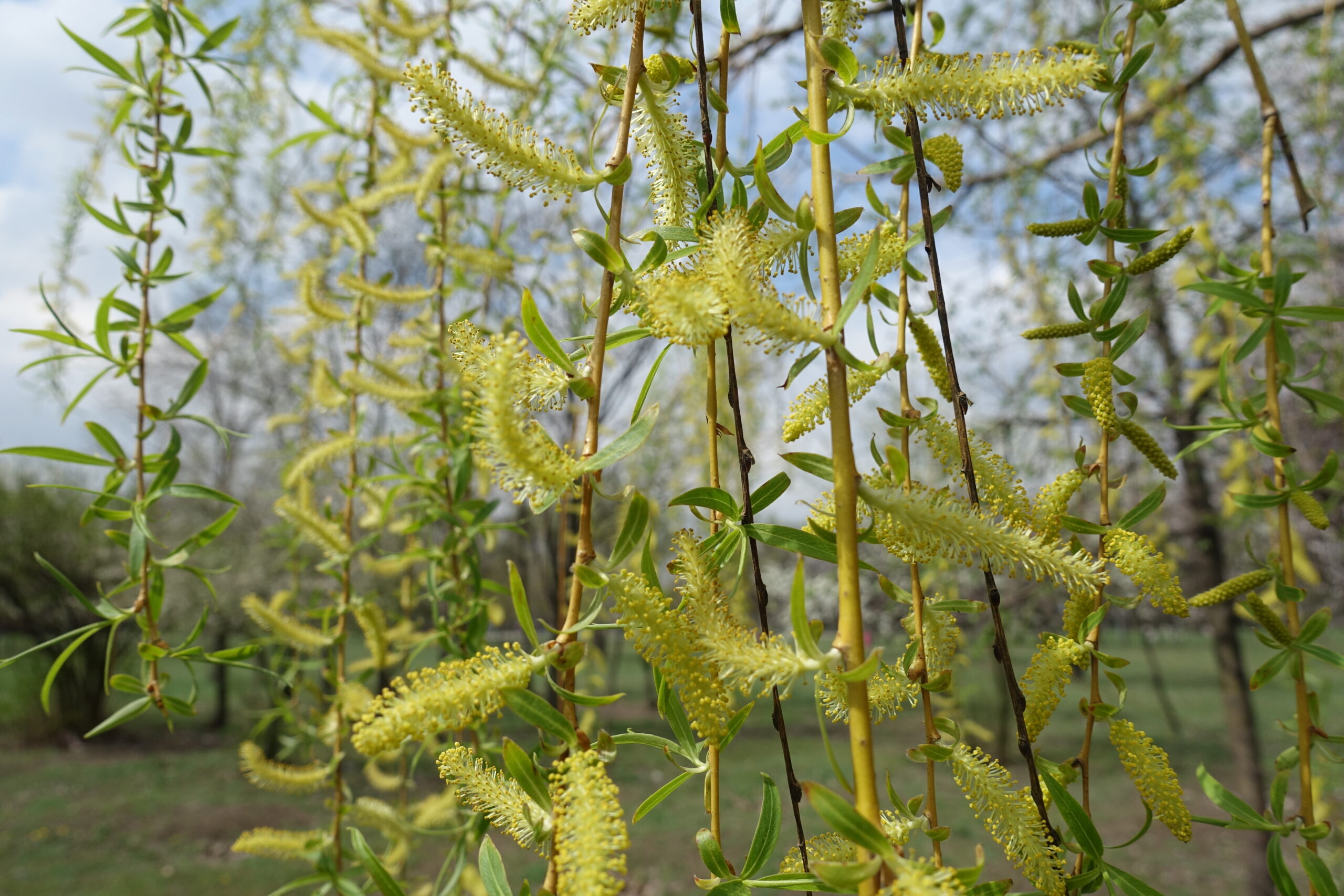
Golden bark
Cornus sericea ‘Flaviramea’ (golden-twig dogwood): Deciduous shrub grows 6 feet tall and 12 feet (1.2-3.6m) wide, a tree-shrub. Dark green ovate to lance-shaped leaves turn red or orange in autumn. Trunks and stems turn yellow-green to golden after the leaves drop. Grow in full sun to partial shade. Zones 3-8.
Salix alba ‘Tristis’ (golden weeping willow): Large deciduous tree grows 45 to 60 feet tall (14-18m) and 40 to 50 feet (12-15m) wide. Handsome upright species with open habit or growth. Delicately toothed leaves are silky on the undersides. Produces bright yellow to orange winter shoots. Zones 4-9.
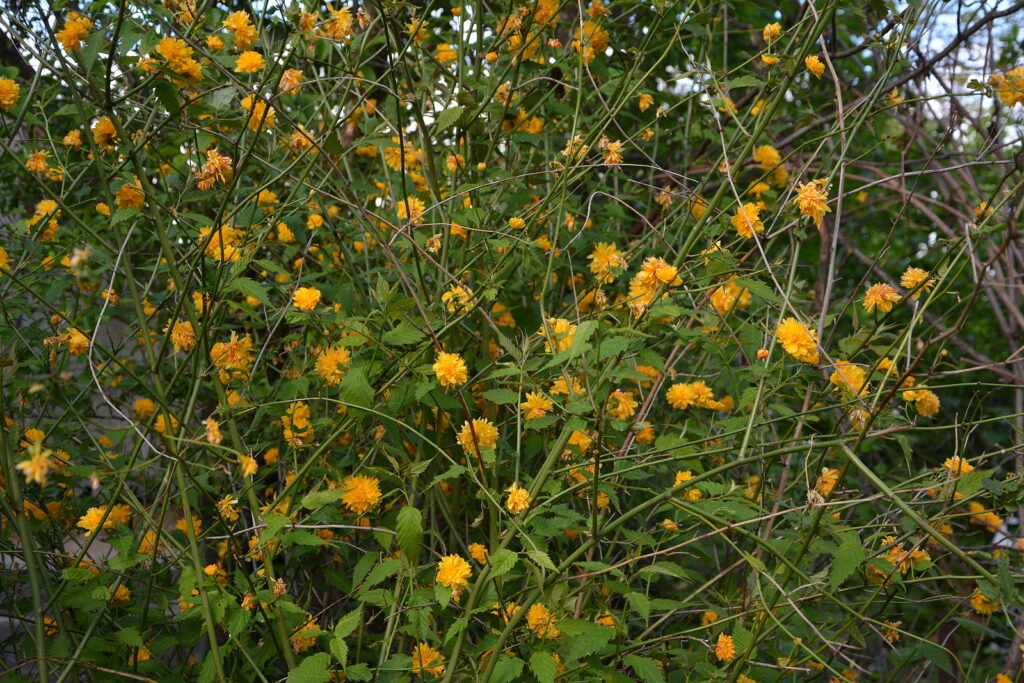
Green bark
Acer palmatum ‘Aoyagi’ (green-bark maple): Small deciduous tree grows 15 to 20 feet (4.5-6m) tall and 20 to 25 feet (6-8m) wide. Lobed leaves are rich yellow in spring and vibrant yellow in autumn before falling. A wonderful counterpart to the red-orange stems of a coral bark maple, Aoyagi displays bright pea green bark on bare stems in winter. Needs good soil. Does best in partial shade. Zones 5 – 8.
Kerria japonica (Japanese rose): Shrub grows 6 to 8 feet (1.8-2.4m) tall and 6 feet (1.8m) wide. Rounded double flowers are brilliant yellow and long-lasting; branches bend gracefully beneath their weight. Bright green bark is attractive in winter. Plant in full sun and shade. Zones 5-9.
Laburnum X watereri (golden-chain tree): Mid-size spreading deciduous tree grows 15 to 20 feet (4.5-6m) tall and 12 to 15 feet (3.6-4.5m) wide. Bears yellow pealike flowers in long, hanging clusters in late spring followed by brown seedpods lasting into winter. Green bark is picturesque once leaves fall in autumn. Zones 5-7.
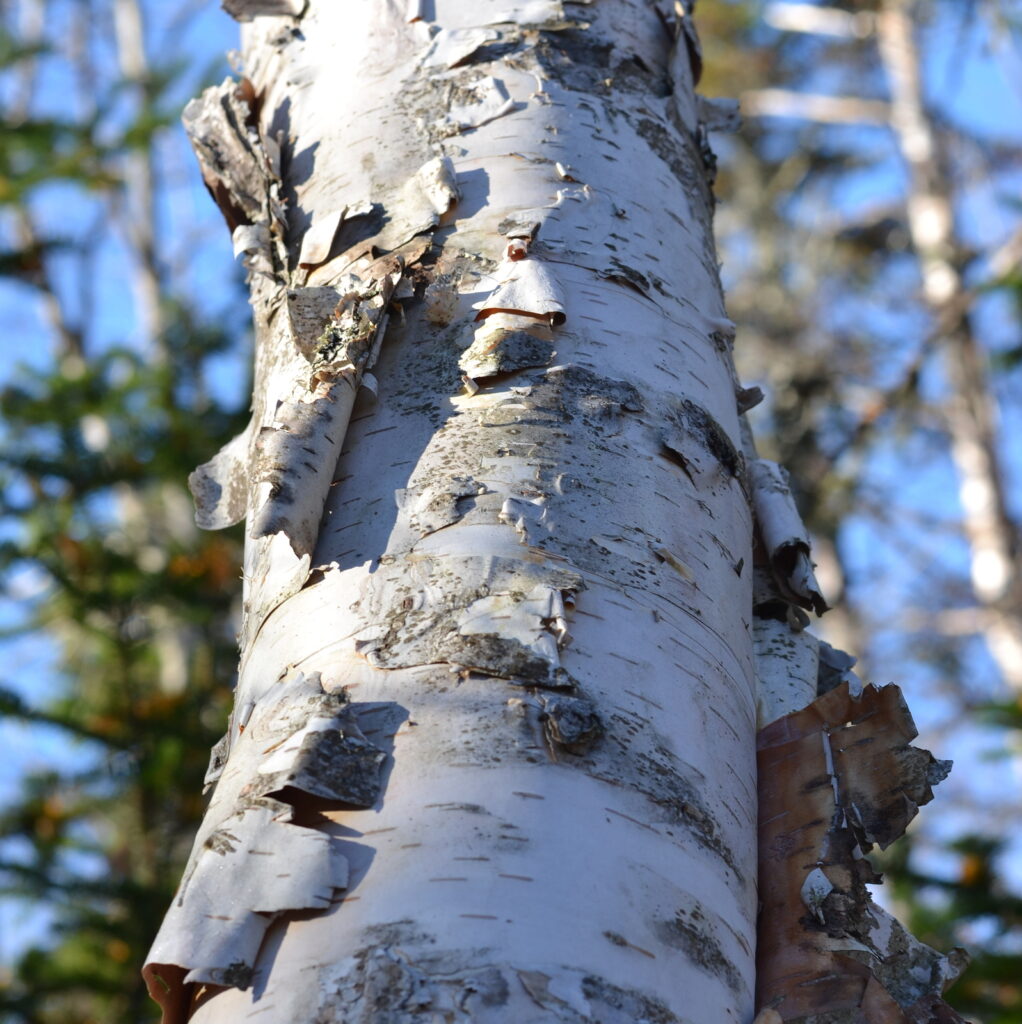
White bark
Betula spp. (paper birch, white-bark birch). Birch trees are grown for their ornamental bark, colorful autumn foliage, and graceful habit. Many of these deciduous trees are suitable for a small garden, either as isolated specimens or in small groups. White and often peeling bark throughout the year. Plant in full sun or light, dappled shade. Zones 4-8.
Populus spp. (poplar): Deciduous spreading trees grow 50 to 80 feet (15-25m) tall and half as wide. The bark on young trees is smooth, white to greenish or dark grey, and often has conspicuous lenticels. The bark on on old is smooth in some species, but becomes rough and deeply fissured in others. Plant in full sun. Zones 4-9.

Metallic bark
Prunus maackii and P. serrula.(ornamental cherry): Deciduous spreading trees grow to 30 feet (10m) tall and nearly as wide. Brilliant coppery metallic bark in horizontal striations nearly matched in beauty by dense racemes of bowl-shaped fragrant white flowers in spring. Green leaves break in spring and turn yellow in autumn. Plant in full sun. Zones 3-8.

Mottled bark
Chionanthus retusus (Chinese fringetree). Spreading deciduous shrub or small tree grows 10 feet (3m) tall and wide with peeling or deeply furrowed bak. Glossy bright green leaves and fragrant white flowers in erect panicles. Plant in full sun. Zones 5-9.
Cornus kousa and C. mass (kousa dogwood, Cornelian cherry). Conical to spreading small deciduous trees with bark which peels off in irregular patches, revealing a mosaic of mottled colors underneath. Groww 15 to 20 feet (4.5-6m) tall and wide. Plant in full sun. Zones 5-8.
Parrotia persica (Persian parrotia). Dense spreading, short-trunked deciduous tree with peeling, gray and fawn bark when mature grows to 25 feet (8m) tall and 30 feet (10m) wide. Glossy rich green leaves turn yellow, orange, and red-purple in autumns. Tiny spider-like red flower in late winter and early spring. Plant in full sun or partial shade. Zones 4-7.
Pinus bungeana (lace-bark pine). Columnar or bushy-crowned, slow-growing evergreen tree with smooth bark which flakes with age into small, rounded, irregular sacles, revealing light green to cream patches that darken to reddish brown and gray-green. Grows to 50 feet tall and 20 feet (6m) wide. Plant in full sun. Zones 4-7.
Platanus spp. (sycamore). Imposing and open branched deciduous tree with large palmately lobed leaves and flaking gray, brown, and cream bark revealing greenish bark below. Grows to 70 feet (20m) or more tall and nearly as wide. Plant in full sun. Zones 3-8.
Stewartia pseudocamellia (Japanese stewartia): Broadly columnar, deciduous tree with peeling, pink to red-brown and gray bark. Dark green leaves turn yellow to orange to red in autumn. Camellia-shaped white flowers, borne in leaf axils. Grows 70 feet (20m) tall and 25 feet (8m) wide. Plant in full sun. Zones 5-8.
Ulmus parvifolia (lacebark elm): Spreading, deciduous or semi-evergreen tree with rounded crown and flaking bark marked orange and browns. Glossy dark green lease turn yellow or red in late summer to autumn. Grows to 60 feet (18m) and to 40 feet (12m) wide. Plant in full sun. Zones 5-9.

Peeling park
Acer griseum (paperbark maple): Slow-growing, rounded deciduous tree to 30 feet (10m) tall and wide. Highly ornamental peeling, orange-brown bark. Dark green 3-palmate leaves turn orange to red and scarlet in autumn. Plant in full sun. Zones 4-8.
Betula nigra (river birch): Conical spreading deciduous tree grows to 60 feet (18m) tall and 40 feet (12m) wide. Shaggy red-brown bark, peeling in layers when young, becoming blackish or gray-white and fissured in old age. Leaves are dark green turning to yellow in autumn before falling. Plant in full sun. Zones 4-9.
Hydrangea quercifolia (oakleaf hydrangea): Deciduous, mound-forming shrub grows to 6 feet (1.8m) tall and 8 feet (2.4m) wide with attractive peeling, orange-brown bark, and deeply lobed mid-green leaves that turn bronze-purple in autumn before falling. Bears conical panicles of white flowers in summer that become pink-tinged with age. Grow in sun or partial shade. Zones 5-9.


